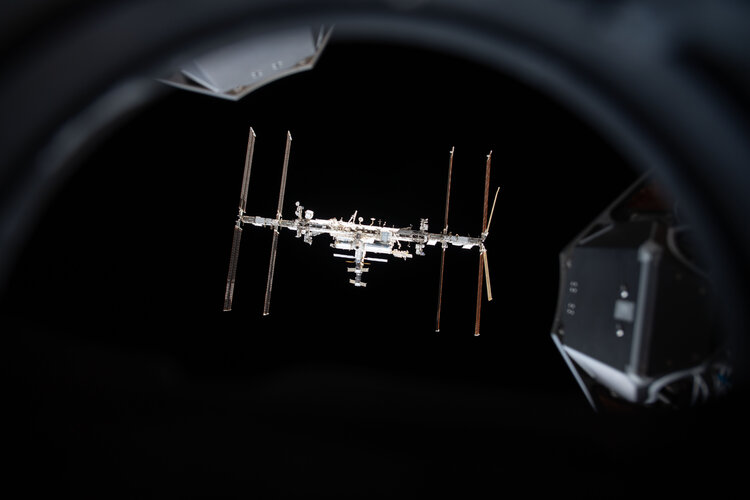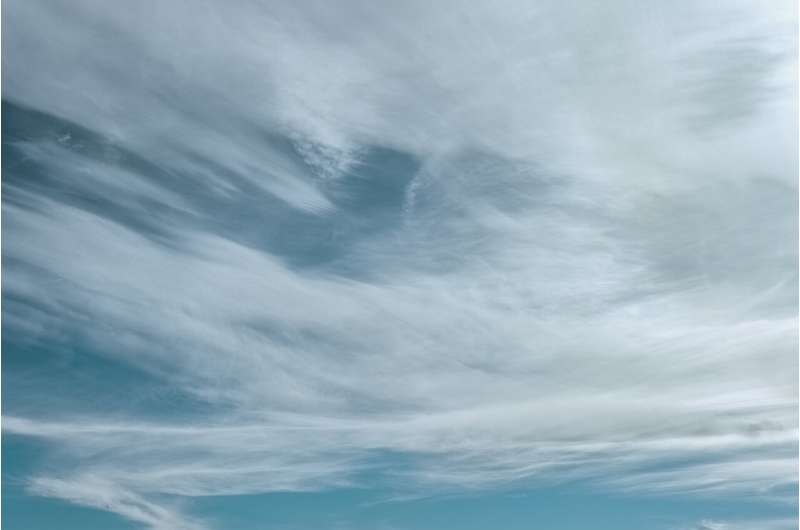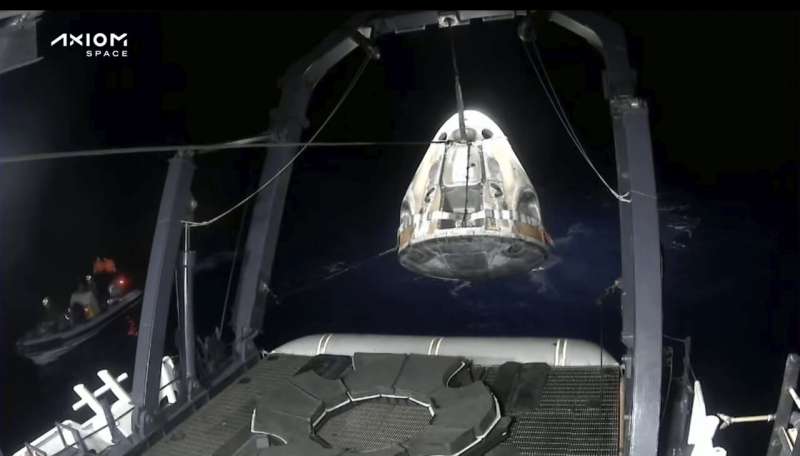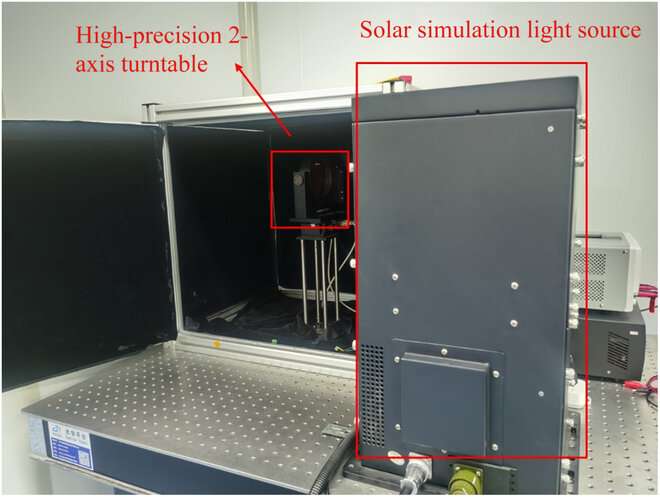One-third of galaxy's most common planets could be in habitable zone
Wednesday, 31 May 2023 11:08 Our familiar, warm, yellow sun is a relative rarity in the Milky Way. By far the most common stars are considerably smaller and cooler, sporting just half the mass of our sun at most. Billions of planets orbit these common dwarf stars in our galaxy.
To capture enough warmth to be habitable, these planets would need to huddle very close to their small stars, which leaves them susceptible to
Our familiar, warm, yellow sun is a relative rarity in the Milky Way. By far the most common stars are considerably smaller and cooler, sporting just half the mass of our sun at most. Billions of planets orbit these common dwarf stars in our galaxy.
To capture enough warmth to be habitable, these planets would need to huddle very close to their small stars, which leaves them susceptible to Astronomers discover a key planetary system to understand the formation mechanism of the mysterious 'super-Earths'
Wednesday, 31 May 2023 11:08 A study led by researchers of the University of Liege and the CSIC - using observations from NASA's TESS telescope - presents the detection of a system of two planets slightly larger than Earth orbiting a cold star in a synchronized dance. Named TOI-2096, the system is located 150 light-years from Earth.
The discovery is the result of a close collaboration between European and American uni
A study led by researchers of the University of Liege and the CSIC - using observations from NASA's TESS telescope - presents the detection of a system of two planets slightly larger than Earth orbiting a cold star in a synchronized dance. Named TOI-2096, the system is located 150 light-years from Earth.
The discovery is the result of a close collaboration between European and American uni Astronomers detected two major targets with a single telescope - a mysterious signal and its source galaxy
Wednesday, 31 May 2023 11:08 Astronomers have been working to better understand the galactic environments of fast radio bursts (FRBs) - intense, momentary bursts of energy occurring in mere milliseconds and with unknown cosmic origins.
Now, a study of the slow-moving, star-forming gas in the same galaxy found to host an FRB has been published in The Astrophysical Journal. This is only the fourth-ever publication on tw
Astronomers have been working to better understand the galactic environments of fast radio bursts (FRBs) - intense, momentary bursts of energy occurring in mere milliseconds and with unknown cosmic origins.
Now, a study of the slow-moving, star-forming gas in the same galaxy found to host an FRB has been published in The Astrophysical Journal. This is only the fourth-ever publication on tw Helium nuclei research advances our understanding of cosmic ray origin and propagation
Wednesday, 31 May 2023 11:08 Much of our understanding of the Universe and its mysterious phenomena is based on theoretical interpretations. In order to deepen the understanding of distant objects and energetic phenomena, astronomers are looking at cosmic rays, which are high-energy charged particles composed of protons, electrons, atomic nuclei, and other subatomic particles. Such studies have revealed that cosmic rays con
Much of our understanding of the Universe and its mysterious phenomena is based on theoretical interpretations. In order to deepen the understanding of distant objects and energetic phenomena, astronomers are looking at cosmic rays, which are high-energy charged particles composed of protons, electrons, atomic nuclei, and other subatomic particles. Such studies have revealed that cosmic rays con GPS tracking reveals how a female baboon stopped using urban space after giving birth
Wednesday, 31 May 2023 11:08Second Axiom Space private astronaut mission concludes with splashdown
Wednesday, 31 May 2023 10:22
A SpaceX Crew Dragon spacecraft splashed down in the Gulf of Mexico late May 30, concluding Axiom Space’s second private astronaut mission to the International Space Station.
China looks to Long March 8 rocket to help launch its answer to Starlink
Wednesday, 31 May 2023 09:09
Wanted: European commercial cargo service for space stations around Earth
Wednesday, 31 May 2023 07:56
ESA invites European companies to submit proposals for commercial cargo transportation services to and from the International Space Station and future commercial low Earth orbit outposts.
High winds halt Spanish rocket launch
Wednesday, 31 May 2023 07:46
The maiden flight of the Spanish-built Miura 1 rocket was canceled Wednesday due to high winds, startup PLD Space said, in a setback for development of the small-scale space launcher.
"We have no green light, there are gusts of wind at high altitude above our limits. That means we don't have sufficiently safe conditions to launch," a commentator said on PLD Space's livestream of the lift-off, which was to be Spain's first.
It will be several days before a new launch window opens, the commentator added.
Standing just 12 meters (40 feet) tall, the small rocket was to fly 100 kilometers (62 miles) above the Earth's surface from a military base in southern Spain.
While that distance would put it in outer space, the rocket is not powerful enough to reach orbit.
Wednesday's sub-orbital launch had been slated to bring a payload with micro-gravity experiments, as well as setting up PLD Space's plans for future rockets.
"The idea is to learn and to minimize risks for the first flights of the Miura 5", said PLD Space cofounder Raul Verdu, referring to a launcher the firm hopes will place satellites into orbit from 2025.
Private flight with 2 Saudi astronauts returns from space station with Gulf of Mexico splashdown
Wednesday, 31 May 2023 07:39
Register for ESA’s first Earth observation commercialisation event
Wednesday, 31 May 2023 05:55
Registration is now open for ESA’s first-ever Earth Observation Commercialisation Forum. Taking place at ESA Headquarters in Paris from 30 to 31 October 2023, investors, institutions, entrepreneurs and companies of any size from the Earth observation sector will now be able to come together and discuss the commercial potential and challenges of Earth observation, together with the technical, industrial and risk-capital support available to European companies.
Spain signs Artemis Accords
Tuesday, 30 May 2023 23:35
Spain is the latest European nation to sign the Artemis Accords, a central element of a new American strategic framework for space diplomacy.
Telesat orders prototype satellite to continue LEO broadband tests
Tuesday, 30 May 2023 21:13
Telesat plans to launch another low Earth orbit prototype satellite in the coming months to continue tests after an aging demonstrator for its delayed broadband constellation ran out of fuel.
Northrop Grumman’s deep-space radar passes critical design review
Tuesday, 30 May 2023 20:26
A deep-space radar developed by Northrop Grumman for the U.S. Space Force passed a critical design review, the company announced May 30.
Researchers propose a deep neural network-based 4-quadrant analog sun sensor calibration
Tuesday, 30 May 2023 18:32
A spacecraft can estimate the attitude state by comparing external measurements from attitude sensors with reference information. CubeSats tend to use 4-quadrant analog solar sensors which have the advantages of extremely low power consumption, minimal volume, low complexity, low cost, and high reliability as attitude sensors, considering the limitation of satellite volume and payload. The performance of the sensor can be importantly improved by the calibration procedure and compensation model.
However, the various error sources affecting the calibration of the 4-quadrant sun sensor lead to a complicated process of compensation model establishment. Deep learning, which is widely used in the aerospace field in recent years, is able to approximate any continuous function on a bounded closed set, providing new ideas for solving the traditional problem.
In a research paper recently published in Space: Science & Technology, authors from Northwestern Polytechnical University, German Aerospace Center, and Dalian University of Technology together propose a method to calibrate sun sensors by deep learning, which not only is able to integrate the influence of various errors but also avoids the need of analyzing and modeling every single error.

